by Kevin Cody
The 15-foot, knife-shaped paddleboard with its rounded hull, and foot-controlled tiller, newly donated to the Hermosa Historical Museum, resembles the dozen other knife-shaped paddleboards hanging deck down from the museum’s ceiling.
Notable boards in the museum’s collection include the board Kip Jerger shaped and won the 1982 Catalina Classic on, and the Dale Velzy-shaped board Terry Stevens won the stock (12-foot) 1982 Classic on. The newly donated board was also raced in the Catalina Classic in the 1980s. The donor, Jim Mollica, of Redondo Beach, placed third on the board in the 1984 Catalina Classic and sixth in the 1985 Catalina Classic.
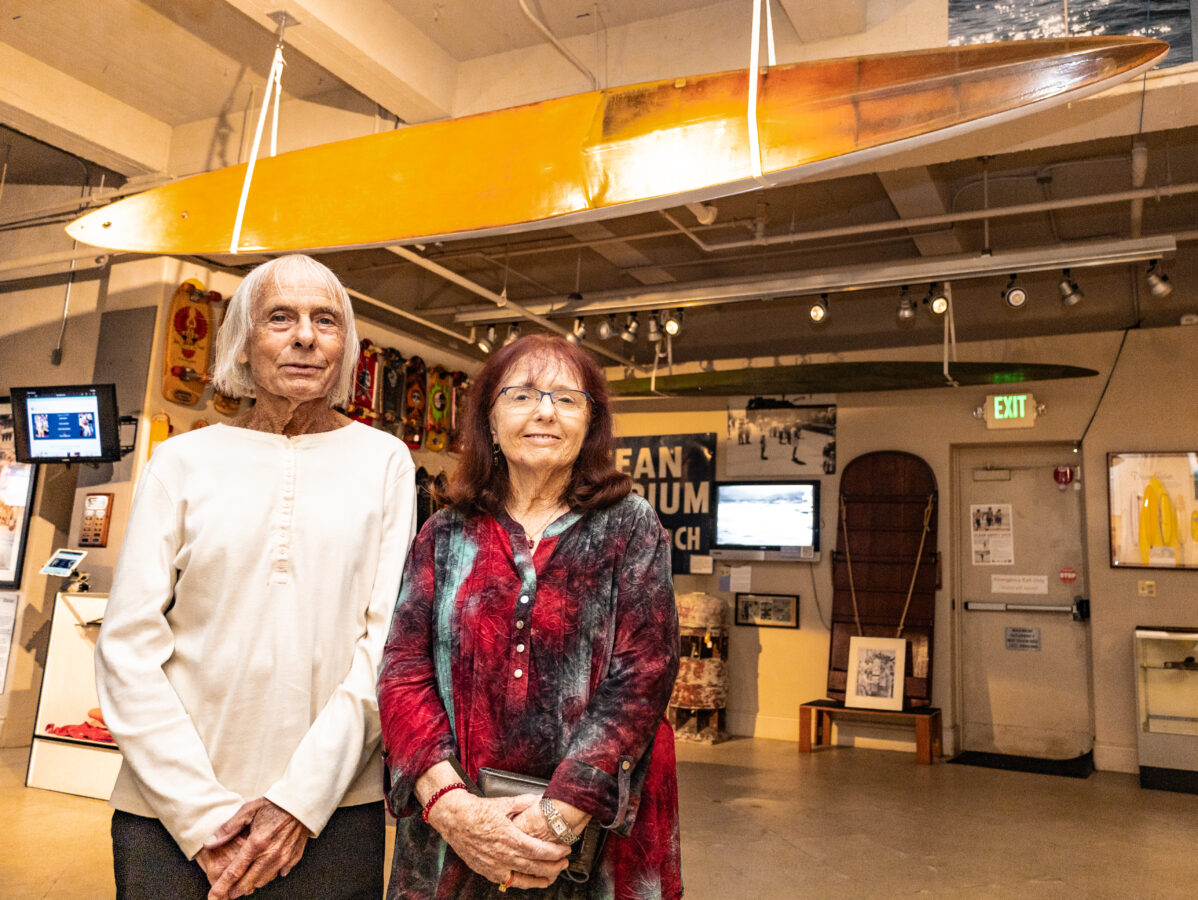
What distinguishes Mollica’s board from others in the collection, including the other Catalina Classic boards, despite its similar shape, is its age. Mollica’s board was shaped in 1936.
The only other board in the museum’s collection that predates the 1980s is a 1930s Tom Blake “cigar box,” so called because of its boxy rails and flat bottom.
Historical Museum Board Member Mark Shoemaker told the story of how Mollica came into possession of a board five decades ahead of its time to a packed museum audience last Saturday, August 29.
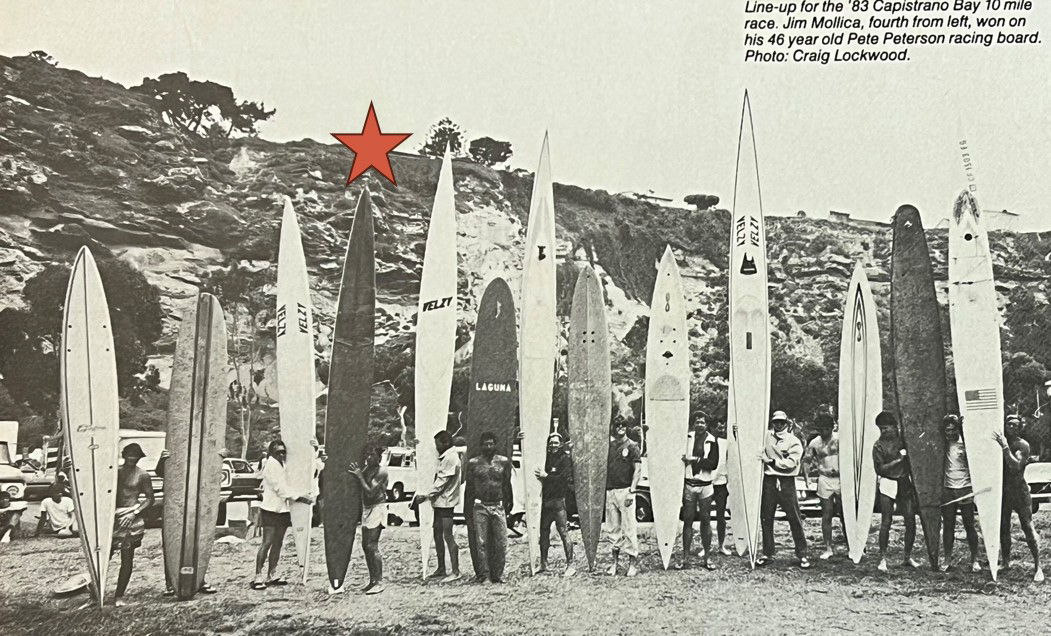
The 1936 board’s rounded hull was designed by nautical engineer Bob French for Santa Monica Lifeguard Pete Peterson. French recognized that a rounded hull, long common in boating, would be vastly more efficient for paddlers than the flat bottoms common to paddleboard through the ‘50s.
Unlike modern paddleboards, made of lightweight polyurethane foam wrapped in fiberglass or carbon fiber, Peterson’s board was solid balsa and weighed 90 pounds. In 1946, Peterson hollowed out the balsa, reducing its weight to 32 pounds, or just a few pounds heavier than modern boards.
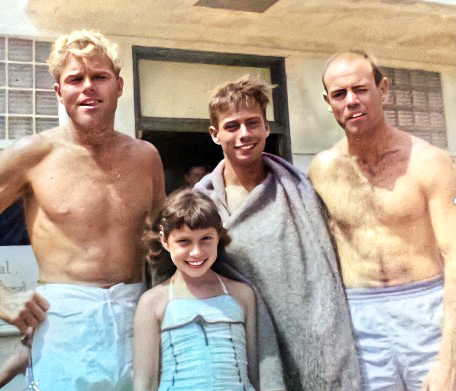
That year, Peterson also added the foot-controlled tiller, an innovation that would not be widely adopted until Joe Bark began building paddleboards in the mid ‘80s.
Mollica, who was also a Santa Monica lifeguard, bought the French-designed board from Peterson in 1959 for $300 ($3,000 in today’s dollars).
That year, on his new board, Mollica placed first in the 16-mile Malibu to Paradise Cove (and back) race and second in the Hermosa Beach Aloha Days Paddleboard Race.
The following year, Mollica placed second in the Manhattan Beach International Paddleboard Race, behind legendary lifeguard Tom Zahn, who is best remembered for having dated Marilyn Monroe. The 32-mile race from Catalina Island to the Manhattan Beach Pier was suspended in 1961, and resurrected in 1982 by lifeguards Buddy Bohn and Gibby Gibson, who renamed it The Catalina Classic.
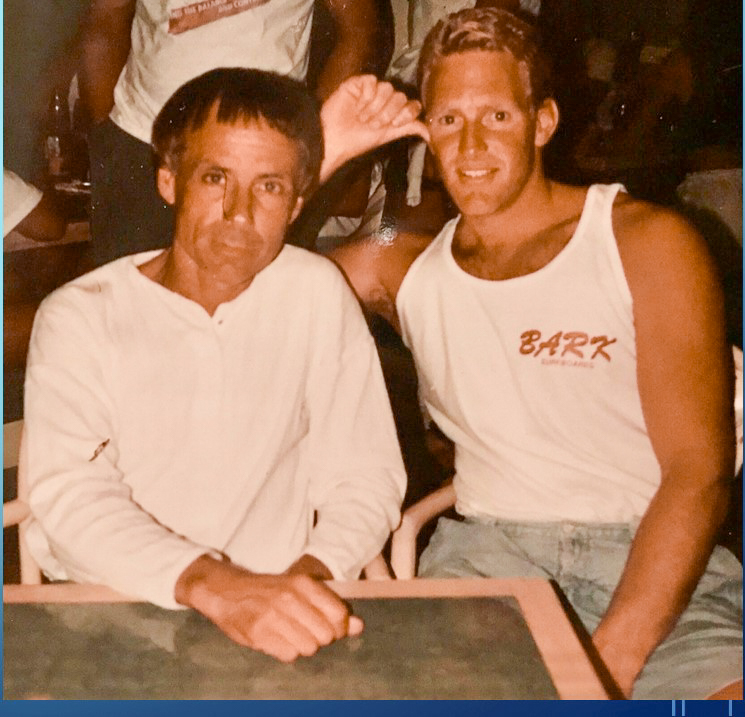
In the 1984 Catalina Classic, racing his five-decades old board against paddlers with newly built, foam and fiberglass boards, Mollica finished third, behind Mike Young and future paddleboard builder Joe Bark. Bark would win the Classic in 1988, and 1989, and become a popular paddleboard builder. In recent years, almost all boards raced in the Classic have been Bark boards. The 2024 Catalina Classic, on August 25, was won by Bark’s son Jack, in a record setting time of 4:54:45. He was riding a Bark. His sister, Emily, who was also riding a Bark, won the women’s division.
Mollica last raced his 1936 paddleboard in the Classic in 1985, and finished sixth. In 1988, he raced the Classic for the last time, but on a newer, stock board. He was 48 and placed sixth overall and first in the stock division, traditionally dominated by younger padders.
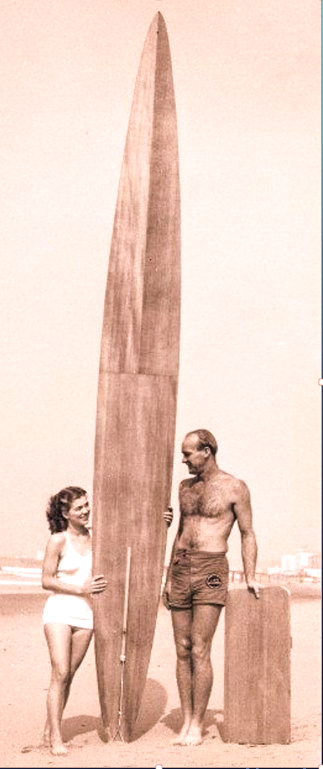
The only significant modification Mollica made to the historic, balsa, 1936 board after he bought it from Peterson in 1959 was to paint the hull white to cover three decades of wood putty repairs.
The paint job cost him $29.95 at Earl Scheib, Mollica told his Hermosa Museum audience. ER











